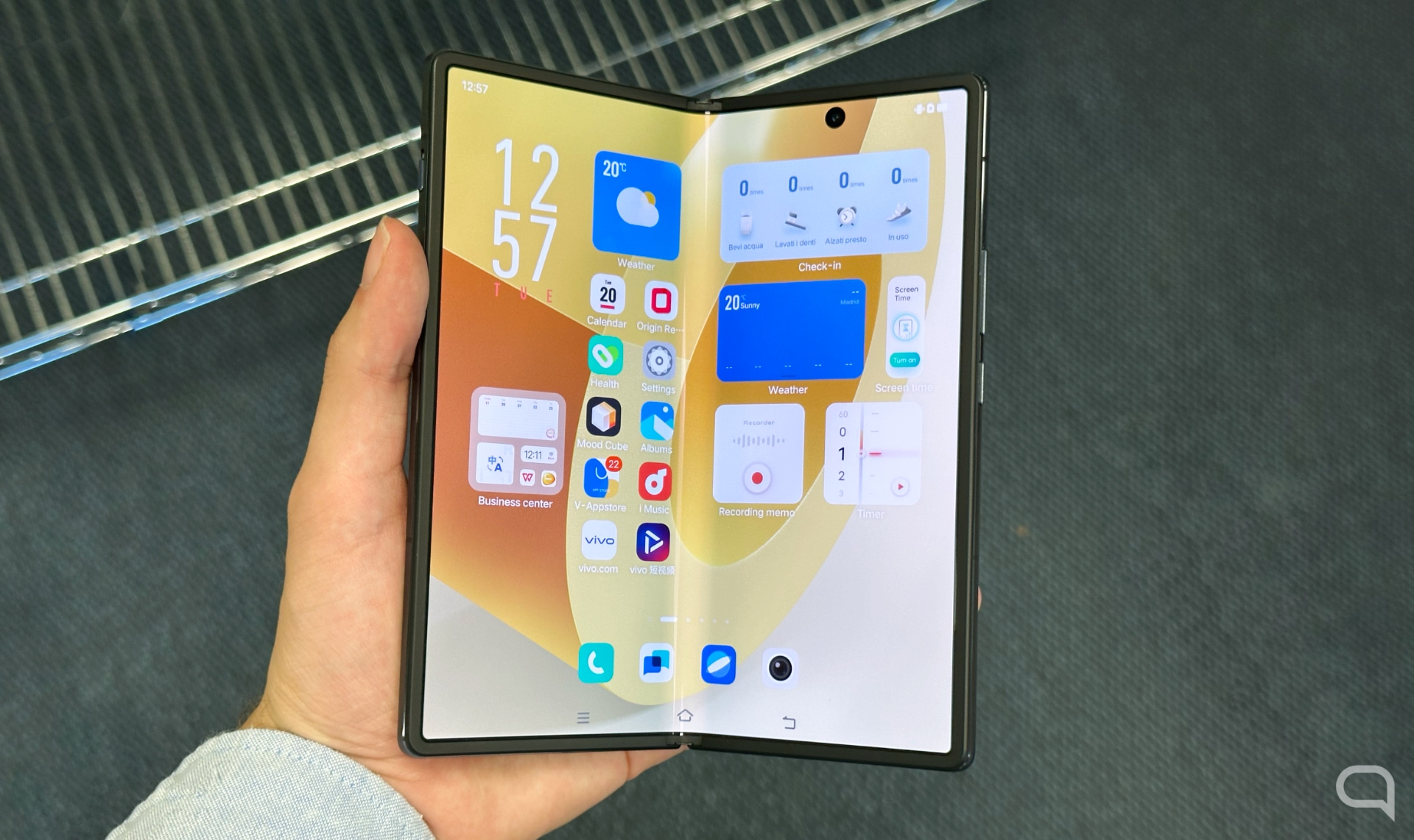Many folding mobiles have passed through my hands. And, whenever it happens, I end up with the same conclusion: there is no other like the Oppo Find N. I have seen them more powerful, more beautiful and with a better camera, but no mobile phone with a flexible screen has managed to recover the feeling I had after test the mobile of the Asian firm: that of holding a true folding mobile, whose function is to offer a compact and comfortable design and, in turn, a large screen. The only model that has made me recover that feeling has been the Vivo X Fold.
This smartphone, announced in April 2022, is similar to the Samsung Galaxy ZFold 4. It has a “book-type” design where the 8-inch flexible inner panel folds and also includes a 6.43-inch outer screen. The goal is to be able to enjoy a panel with similar dimensions to those of a tablet, but in a design similar to that of a smartphone.
A priori, it could be one more model in an increasingly wide catalog of folding phones. However, I consider it a very worthy alternative to Samsung’s flagship foldable. At least, yes, if this Vivo was sold in Spain. The model, despite the fact that hypertextual We have been able to be alone with it to test it first hand, it is only sold in the Asian market.
The Vivo X Fold, in fact, may even be the example that Samsung should follow to refine a folding that for years has been the king in its category, but which still has a lot to evolve.
The exterior screen of the Vivo X Fold

The Samsung Galaxy Z Fold 4, remember, has two screens. The inner one, 7.6 inches, and the outer one, which measures 6.2 inches. This panel is undoubtedly fantastic from a technical point of view. It also has certain specifications that improve the user experience, such as a refresh rate of 120 Hz. However, it has a drawback: its aspect ratio.
The outer panel has a ratio of 23.1:9, much narrower and longer than that of conventional smartphones. Although it allows you to reproduce the content clearly and without any problem, it is somewhat uncomfortable to use. Writing, for example, is not practical at all. And holding it to navigate the interface, either.
The Vivo X Fold, on the other hand, has a much more suitable format, 21:9, and this makes the experience of using this screen considerably better. Because, let’s be honest, as much as the flexible inner screen is the protagonist, the outer one is the one that we are going to use on most occasions. Whether it’s to reply to a message, check navigation on Google Maps, browse Instagram… having access to this panel is much more practical, especially when we’re on the go.
One detail that has surprised me is that Vivo’s mobile is not much larger or heavier than the Samsung Galaxy Fold 4. Not even the ratio of the screen harms the inner panel, although this one, yes, has a little more frames than the Samsung folding one. It is, in my opinion, a sacrifice that is worth it considering how comfortable and practical those 21: 9 are compared to the 23.1: 9 of the Fold 4.
Hide the wrinkle on the flexible screen
Another of the drawbacks that we see in the Samsung Galazy Z Fold 4 and that Vivo solves in a very practical way is the wrinkle on the screen. Flexible panels, in particular, create a kind of wrinkle in the center due to the hinge, since this, for different reasons, does not finish stretching the panel completely.
Vivo, on his X Fold, does not completely hide this wrinkle, but yes it minimizes it considerably. To a point where it does not bother the naked eye and it is not appreciated to the touch either. Only in some specific situations, such as putting the terminal in a specific position and making the screen reproduce a white color, you get to appreciate that slight mark on the screen. However, it does not reach the level of perfection of the Oppo Find N, despite the fact that they use a similar mechanism.
The Vivo X Fold, in addition, is —apparently— more resistant than the Samsung Galazy Z Fold 4. The company assures that it can withstand up to 300,000 folds; 100,000 more than the Samsung mobile.
The Vivo X Fold does not skimp on features either

Vivo, although it prioritizes the folding screen, does not neglect other features. Like, for example, those related to the photographic section. In fact, the Vivo X Fold has exactly the same camera configuration as the Vivo X80 Pro. It is also signed by Zeiss. Regarding the SoC, the X Fold has a Snapdragon 8 Gen 1as well as with a configuration that starts from 12 GB of RAM and 256 GB of internal memory.
Unfortunately, we reiterate, the Vivo X Fold will not be marketed beyond the Asian market. If it did, however, it would undoubtedly be the best alternative to Samsung’s flagship foldable.


